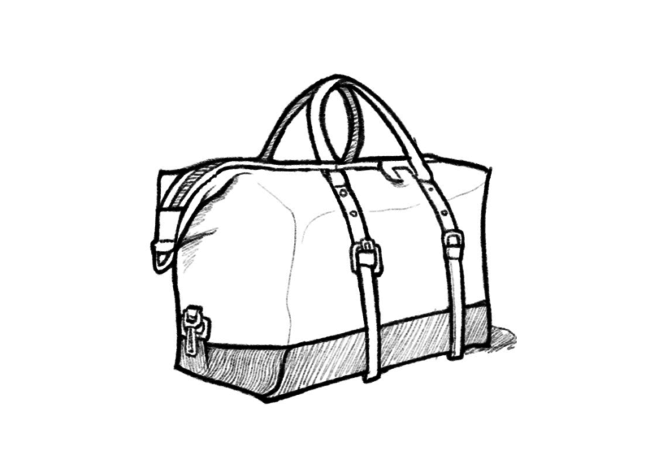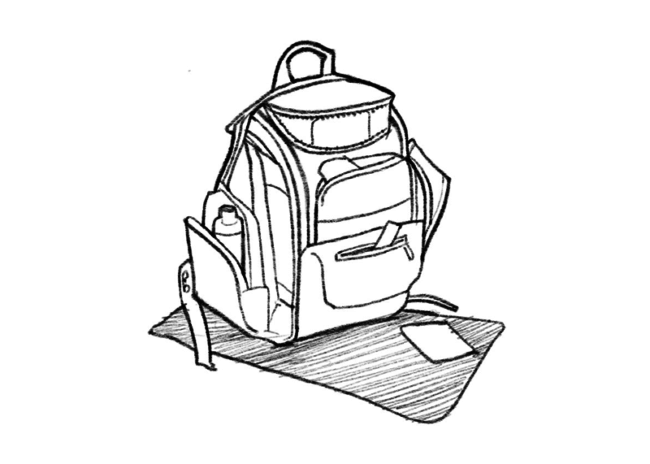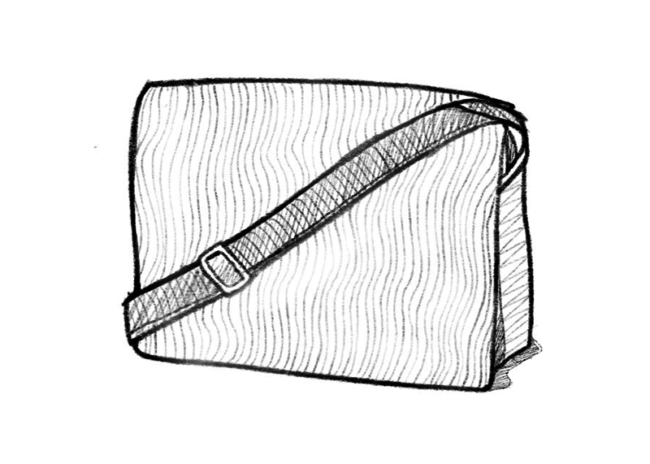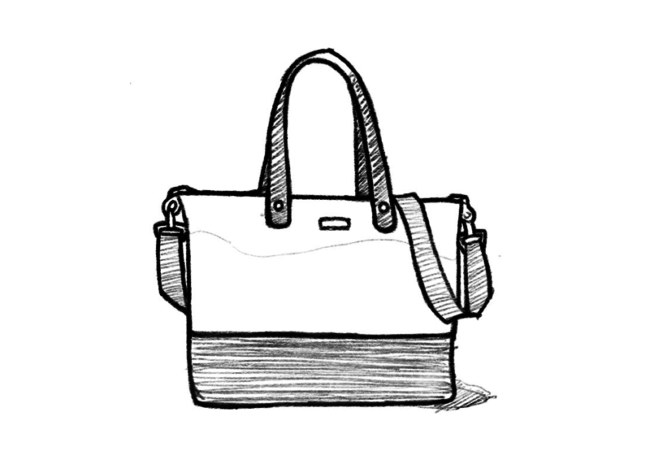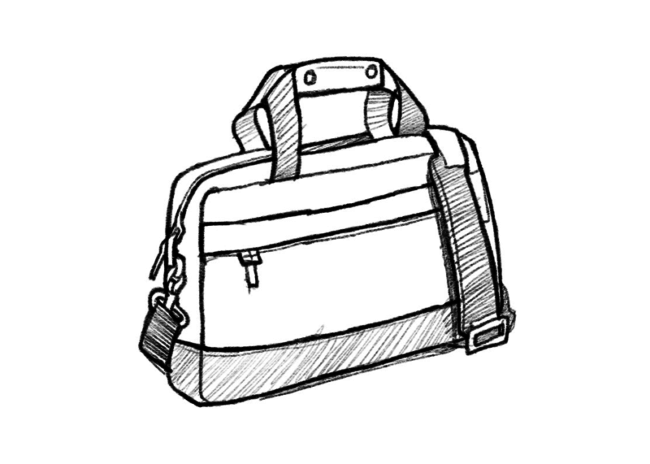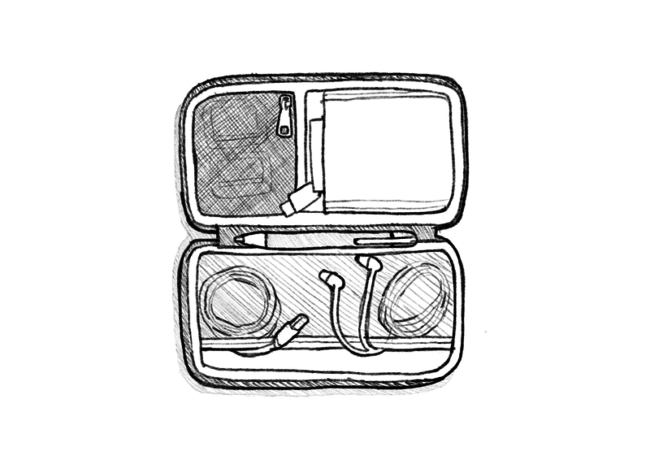BAG GLOSSARY
Thank you for visiting our Bag Glossary. We have compiled the largest collection of wholesale promotional bag types available online.
Anti-Theft: Method used to prevent or deter the unauthorized entry into a bag usually a locking zipper.
Athletic Bag: A bag that is roomy that allows one to keep all the necessities for the gym or yoga class. It can be slug across the shoulder or simple carried like another bag. See also gym bag.
Backpack: A bag held to the back of two symmetrical shoulder straps attached at the top and bottom of the bag’s outer edges.
Backpack Handbag: A slightly larger handbag designed to be worn on the back like a backpack. Backpack handbags can have one or two shoulder straps and can be carried by both or by just one like a sling bag.
Barrel: A cylindrical bag that resembles a barrel.
Beach bag: Large colorful bags made of cloth, straw, jute or even a mix of linen and leather. Although these bags are truly a tote, they are not limited to only the beach, but are also ideal for picnics, the gym, or simply carrying it with casual attire.
Billfold: A flat wallet with a clip or slip-in compartment, which holds bills.
Bowler: A rounded design that was inspired by the shape of bags initially intended for carrying bowling balls.
Box: A rigid bag, square or rectangle in shape, with a variety of handle types including metal, bone, shell or wood.
Bucket Bag: A bag that is taller than it is wide with a rounded bottom. Named because they resemble a bucket shape.
Calfskin Leather: Leather made from the hide of young cattle. Calfskin has a soft, smooth texture, which makes it desirable for making smaller, higher quality bags.
Canvas: An inexpensive, versatile fabric made of synthetic fibers, natural fibers or a combination of the two, can be light or heavy in weight. Cotton canvas bags or Hemp canvas bags are one of the most popular types of bags.
Compartment: A large section in the interior of a bag.
Compression Straps: Straps, especially on a backpack, used to compress and stabilize a bag’s contents.
Computer Bag or iPad: A bag usually a tote or shoulder bag specially designed to carry a laptop and its accessories.
Cosmetic Case Bags: A lined bag with varying sizes and shapes with a zip closure designed to hold cosmetics.
Cowhide Leather: Leather made from adult cattle.
Croc: An embossed pattern simulating the skin of a crocodile.
Cross-body: A strap, usually adjustable, that can be used to carry a bag across the body i.e. messenger bag.
Custom: Made or done to order for a particular customer
Denier: A term referring to the size of the filament or yarn used in fabric. A higher denier means a thicker fabric.
Diaper Bag: Bags that often feature many pockets and compartments designed to carry everything one needs to take care of a baby. Some diaper bags have additional features such as matching changing pads and insulation pockets to keep bottles warm.
Doctor’s Bag: A bag modeled after a Victorian era doctor’s bag for making house calls.
Drawstring: A bag that closes at its top via a string, cord or chain laced through holes or eyelets.
Duck Canvas: Heavy, plain woven cotton fabric. Duck canvas differs from plain canvas in that the threads in the former are more tightly woven.
Duffle: A roomy, rectangular bag with a zipper closure and two top handles.
East West (or E/W): A term to describe a bag that is wider than it is tall.
Eco-Friendly: Bags made with materials that benefit the environment in some way. Earth-friendly bags include those made from recycled products, repurposed products, sustainable materials and organic materials.
Embossed: A term used to describe leather or faux-leather with a design imprinted on it. Often exotic skins like croco or snake are actually embossed leather or faux leather.
Envelope: A flat, square or rectangular bag with a triangular top flap that folds over like an envelope to close.
Fabric Bags: Bags made from cloth fabric materials such as canvas, cotton, denim, linen, satin, silk, twill and velvet.
Fanny Pack: A bag worn on the waist designed to carry small items and daily essentials especially during travel, and hiking.
Faux Leather: Faux leather refers to materials that look and feel like leather but are actually synthetic. Faux leather materials include vinyl and PVC.
Feed Bag: A drawstring bag, usually with a shoulder strap, shaped like a horses feed bag; also referred to as a bucket bag.
Flap Bag: A bag with a flap top closure.
Flight Bag: A bag used by passengers and crew to carry on belongings aboard a plane, often has a flight insignia and used rather then a tote bag.
Frame: A bag with a strong, typically angular structure
Grommet: A ring inserted into a hole through the material. Small grommets are often called eyelets.
GSM: Stands for grams per square meter of “grammage”. Like denier and thread count, this is a measure of density, but this refers to the weight in square meters. Like thread count and denier, this roughly correlates with strength in that a material with a higher GSM is generally more resistant to tears and damage all other things (e.g., materials) equal.
Gusset: A piece of material sewn into a bag to strengthen or enlarge a part of it.
Half Moon Bag: Any bag shaped like a half moon, with or without a handle of various sizes.
“Hand” Bag: A bag that is meant to be carried rather than slung across the shoulder.
Hemp: Hemp is three times stronger than cotton, has good abrasion and resistance, as it is very durable. It is mildew resistant, breathable, UV resistant, and softens with each washing without fiber degradation. It is also washable and dry cleanable.
Hobo: A medium to large sized bag with a zipper top closure and a long shoulder strap that typically feature a slouchy posture and scooped center.
Jacquard: Fabric where a pattern is directly weaved in or knitted in. Jacquard fabric often has a raised pattern effect.
Laptop, iPad or Tablet Sleeve: A flexible and form fitting attached or removable envelope-like structure that makes it easy for users to slide in a device to protect it from minor damage.
Leather Bag: A bag made from any tanned animal skin. Most often refers to cowhide but can also refer to ostrich, goatskin, and lambskin.
Lining: The surface material featured on a bag’s interior.
Man-purse or Murse: A masculine or a more unisex appearance of a bag typically in the design shape of a messenger bag or organizer bag.
Material Strength: Describes the unit of measurement that the linear mass density of the material i.e. nylon is stronger than polyester, so a 420D nylon is actually stronger than 600D polyester. The “D” stands for denier. One denier is the mass of one 9,000 meters stand of silk.
Messenger: A bag with a long, adjustable strap designed to be worn across the shoulders. Named after those bags originally carried by mail couriers.
Microfiber: A synthetic fiber that is woven to have the texture of natural fiber cloth.
Muff: A winter bag made of real or faux fur, wool or velvet that has zippered compartment and a slip opening for hands.
Name Plate: A metal or leather plate fastened or sewn to the interior or exterior of a bag. Often displays the logo or name of the bag’s brand.
Nappa Leather: Soft, full grain leather made from up split animal skin-often sheep or lamb.
Non-Woven: Fabric is composed of yarns combined in a different way, such as melting or gluing them together. Although not as strong as woven fabric, nonwoven materials are generally more affordable because they are cheaper and faster to manufacture.
North American Made: The Custom Bag Company produces bags in North America consisting of the following regions: United States, Mexico and Canada.
North South (or N/S): A term to describe a bag that is taller than it is wide.
Nylon: Considered to be the strongest man-made fabric; is highly resistant to abrasion and stains and is mildew resistant and dries quickly. Nylon is often used in tote bags. Imprints on nylon have crisp edges and very little visible texture. Both the material and imprints feel smooth, and logos with fine details are best served on this kind of material.
Oversized: Describes a bag that is particularly large in size, or larger in size than the norm.
Open Pocket: A pocket that does not feature a closure at the top.
Organizer Bag: Bags with compartments and pockets for organized storage of items.
Patent Leather: A glossy finished leather.
Piping: A type of trim or embellishment consisting of a strip of folded fabric so as to form a “pipe” inserted into a seam to define the edges or style lines of the bag.
Polyester: An affordable and lightweight material. It is highly resistant to UV radiation and a very high melting point, which means it can stand more prolonged exposure to the sun than polypropylene or nylon without the material breaking down. It’s mildew resistant, which makes it great for marine uses, but it doesn’t float.
Polypropylene: It feels like a wax paper towel when used in making totes. It has a low heat transfer, meaning it’s a great insulator. Its resistant to hinge stress, which means that repeated opening and closing in typical use won’t wear away the polypropylene. This material also floats and does not absorb water, making it an excellent choice for bags that will be at the beach, pool parties, or places where staying afloat and drying quickly are major assets.
Polyurethane (PU): A man-made material meant to simulate leather.
Pouch: A small bag that can have either long, short, or no straps at all and closes with a drawstring or zipper. They are used for carrying loose items or small items or quantities in which the housing of the bag has organizers for pens, cords, currency or business cards. There are multiple uses and configurations.
Pull Tie: A fabric or leather string that is woven through small holes along the upper circumference of a bag in order to close it.
Quilted Bag: A bag with material that features a topstitched pattern similar to a quilt.
Raffia: A finely woven fiber derived from palms.
Recessed Zipper: All external facing zippers are recessed.
Reptile Skins: These come from snakes, turtles and lizards used to make bags. Reptile is distinguishable by it scaly pattern and texture. Many laws protect endangered reptiles whose skins are used to make illegal bags.
Rivet: A flat-headed metal pin that is inserted through two pieces of material to join them together. The pin is then hammered on the pointed end to form a flat head, thus securing the pieces together.
Safari: A soft leather bag with a curved shape, a top zipper, two top straps or handles, and two outside pockets with flaps and buckle closures.
Satchel: A bag that usually has a top closure, top carry handle, and a flat bottom. Satchels may have a triangular side profile.
Security Bag: A bag that protects the carrier from travel theft and includes an invisible stainless steel strap sewn into the fabric and a protectant on the main zipper.
Self-Repairing Zippers: Zippers that still function even when a few teeth are missing.
Shopper: A type of rectangular tote bag perfect for shopping.
Shoulder Guard: A piece of fabric or leather that functions to distribute the weight of bag and its contents.
Sling Bag: A soft shoulder bag that has a single shoulder strap with one end attached at the bag’s top and the other at the bag’s bottom.
Snakeskin: An embossed pattern simulating the skin of a snake.
Step and Repeat: A decoration technique in which a selected area of a bag is printed with a repeating pattern such that brand logos or emblems are visible.
Stitching: A stitch or series of stitches formed in a particular way.
Straw Bag: A bag made from straw and/or grass materials, which can include sea grass, rattan, straw, cornhusk, raffia, and willow.
Suede: Leather treated to produce a velvet-like finish.
Swagger: A roomy, framed bag with two straps or handles, open outside pockets and a zippered or clasped open top.
Tassel: An ornament consisting of a bundle of threads, cords or other strands hanging from a cylindrical head.
Thread Count: Number of warps and fill (or picks and ends) threads in a square inch. Warp and fill refer to the threads in woven materials that are interlaced at right angles to create the cloth. The number of these within one square inch determines thread count. Similar to denier, it’s a good measure of the thickness (and usually, strength) of an item when comparing with the same material.
Top Grain Leather: The top layer of leather (leather is split into multiple layers before it is used).
Top Handle: A handle that is attached to the top of a bag and designed to be carried in your hands.
Top Zip: A bag with a main opening that can be zipped shut.
Topstitch: A line of stitching bordering the edge or steam of a material. Topstitching threads can be the same color as the host material, or more often, they are a contrasting color.
Tote: A large, rectangular, two-handle bag with an open or zippered top and open main compartment.
Trapeze: A top-handle bag with triangular inserts on either side to give the shape of a trapezoidal effect.
Trim: A decorative material along the edges of a bag.
Vegan Bag: A bag made entirely from non-animal products.
Vegetarian: Describes bags made of synthetic materials.
Vertical Messenger Bags: Usually refers to messenger bags that are taller than they are wide.
Waxed Canvas: Cotton impregnated with paraffin based wax. Widely used from the mid-19th century to the mid-1950s, the product, which originated in the sailing industry in England and Scotland, became widely used by many for waterproofing.
Webbing: A strong, woven material of hemp, cotton, jute, in bands of various widths.
Weekend: A large, wide bag with a top opening and two handles.
Whip Stitch: Widely placed stitches over the surface of a fabric or leather as a decorative element or to bind two pieces of material together.
Woven: Woven fabric consists of yarns placed at right angles to each other. The warp runs the length of the fabric while the fill (or weft) is perpendicular. The cloth gets its strength from weaving the threads over and under each other. Woven materials are stronger and higher quality than nonwoven materials due to the layers created by the threads woven over and under one another.
Zipper Pull: The top tab on the outward-facing part of a zipper that is pulled to open the zipper.
*Credit for content: LaGaksta, Pop Sugar, Handbag Heaven, Sugar Sweet Boutique, Quality Logo Products, Travel Tips by StudioD in the online version of USA Today, Visual Troop, Ebags, Ebay, Pierotucci Leather, and Wikipedia.

